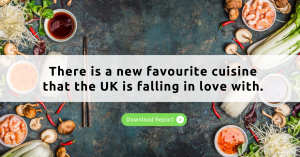Blogs! Remember when they happened? They were great story-telling outlets. Today, blogs are not just for having an online existential crisis. They are necessary promotion tools whether you are travelling around the world, selling bike tyres, or travelling around the world selling bike tyres. But how do you write an impactful blog post that doesn’t dissolve into the sea of blog posts written every day? We have a recipe that doesn’t let you down.
Writing the title
You may not judge a book by its cover, but only 2 in 10 people will read the actual blog post, and 8 in 10 will only read the title. So, the window to grab their attention is short. What can you say at a glance that makes them want to click on your post?
Point 1
Be clear on the subject matter, and be specific. Ambiguity doesn’t necessarily attract readers. Words like super, amazing, awesome, excellent, and great are wasteful and non-intriguing. Use numbers. We all want to know the 7 ways to lose weight without exercising. It is more specific and assures readers that you get to the point quickly. It also means the information is skimmable. Nobody likes a soup of information; without leeway to scan and gather facts fast. Everyone’s in a hurry on the internet.
Point 2
Don’t give the game away. A blog title should arouse curiosity and not summarise the text in a sentence. It should be a teaser of what’s to come, an impetus to read. Clickbait is desperate, but curiosity-fuelling titles show you are smart. Your audience knows the difference by now.
Point 3
Appeal to emotions. Logic is secondary. What drives most online engagement is an emotional response. Ask experts at Harvard and they will tell you.
Writing the introduction
The opening should make them want more. If this is a meal, the introduction is the appetiser. Use short, snappy sentences to hook them in. If you are presenting a solution to a problem, make your problem the villain of the piece and your solution the hero to the rescue. Make your case for why they should read on.
Hooks you can use;
A quote – relatable and well-recognised
Shock – a hard-hitting or unexpected fact or statistic
Danger – evoke the need for urgency. It should be clear that the information you have is vital to their well-being.
Unorthodox solution – your information offers something out of the norm. A different take on the matter the readers are yet to find out.
Empathy – you are one of them or have been through it all and know how they feel
Storytelling – anecdotal or fictional, you are leading them on to your point via an intriguing narrative. Just make sure it’s not long-winded. Google does not favour such intros.
Call them out – you know their bad habit, and it’s causing a problem. It’s time for action.
No fluff – getting right to the point
Even the most amazing blog post idea needs search engines to show it to readers. Use your target keyword in the first 300 words, so your target audience will find it. Craft your keywords around SEO. Ranking higher in SERPs is necessary for it to become a good blog post. If no one is reading your post, you are missing the whole point of writing one.
You might want to learn how discoverable you are to search engines if you experience low traffic to your site.
Writing the body
You must follow a recipe to write a great blog post. How you say it is as important as what you say. Remember, you want your readers to come back for your content. Therefore, it should be informative as well as memorable.
The tone
Choose your tone. Give your writing a personality. Understand the demographics of your audience and how they want to hear what you have to say. Think of two words that can put a voice to your writing style. When you have a unique tone, it tends to stick with your readers.
Create an outline
List down your key points to make your case. These should have their own sections with subheadings to highlight their importance. Each paragraph should not be more than 5-6 sentences long. A lot of info crammed together can put readers off. The layout should be easy to read.
Prove it
Whether it is a problem, solution, or pain point, it should have grounds for discussion. Why does it matter? Present data and evidence to support claims. Even anecdotal evidence matters.
Balancing the facts with emotions
While reason matters, emotions also play their part. When you write a blog post, it isn’t one-way communication. You are trying to engage your audience. Comments, likes, and shares matter. Playing to their emotions is essential to get a reaction. Use relevant images and video clips. Visuals improve content quality. For best results, use images that are a maximum of 600 pixels wide and set to a resolution of 72 dpi.
Writing the conclusion
Do you know that most readers skip the body and scroll right down to the conclusion? They will only read the body if the conclusion offers them an incentive. It is your closing argument. Make it obvious. Label it the ‘conclusion.’ Be clear. Ambiguity doesn’t help here, either. Bring your main message back into the spotlight. Tie up loose ends. Renew the urgency, remind them of the solution, and stir their emotions one last time. And, like all desserts, end it on a good note. Evoke positivity, hope, and inspiration.
Call to action
Here is where your readers decide whether to leave a comment, like, subscribe, share, or do nothing. Calls to action induce a direct response by creating a sense of urgency. Ending your blog post with a question leaves a discussion open. Examples of calls to action look like this: “Have you had a similar experience?” “What do you think of the new government policy?” “How long have you had your car, and have you thought of buying a new one lately?” Want to learn more about one-day crowns? Call our patient support line.
Linking to other websites and blogs
Don’t shy away. Links encourage others to link your content too. It shows that you have done your research and adds validity to your content. And you might even make friends and form partnerships on the way.
Conclusion
A good blog post doesn’t come from an acclaimed writer. It comes from someone who can follow the formula that appeals to human behaviour on the internet. What your competition is doing is nothing extraordinary but simply playing by the rules of the algorithm and the system.
Once you learn the trick of this trade, you too will be writing high-ranking posts Google loves to show others. So, will you be using our formula for your next blog post? Did we miss any pro tips? Tell us how we can help your blog rank high in SERPs.




